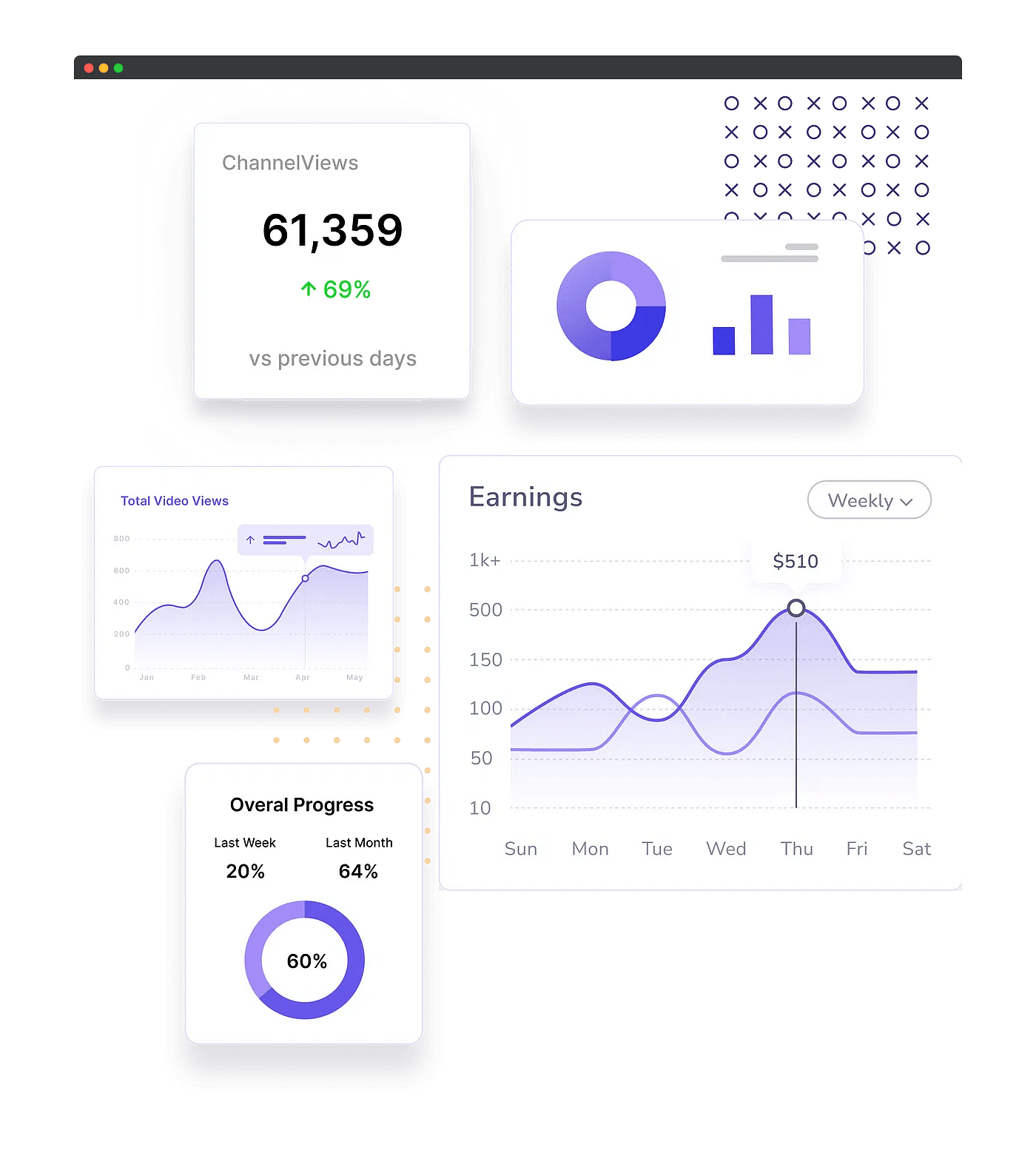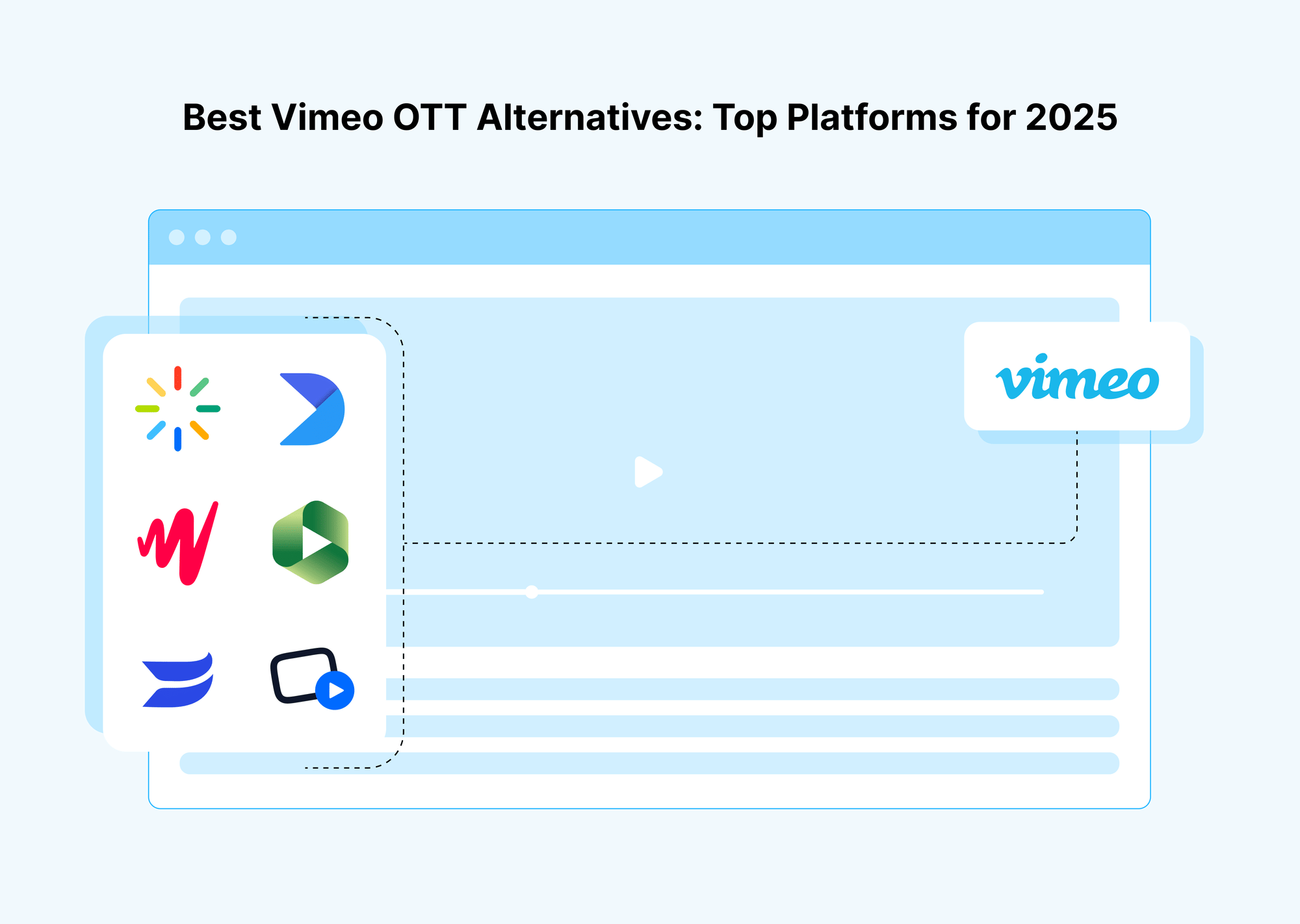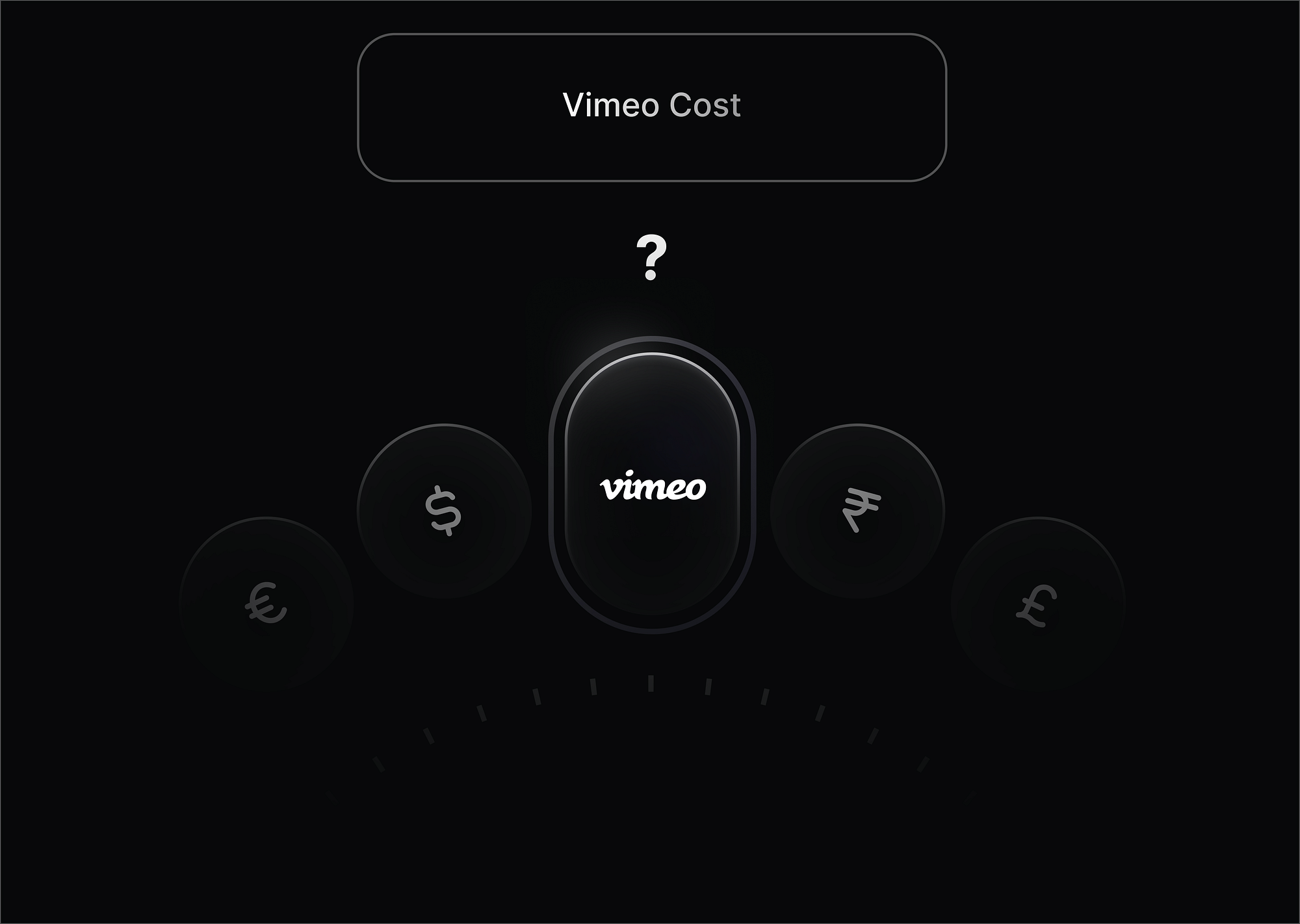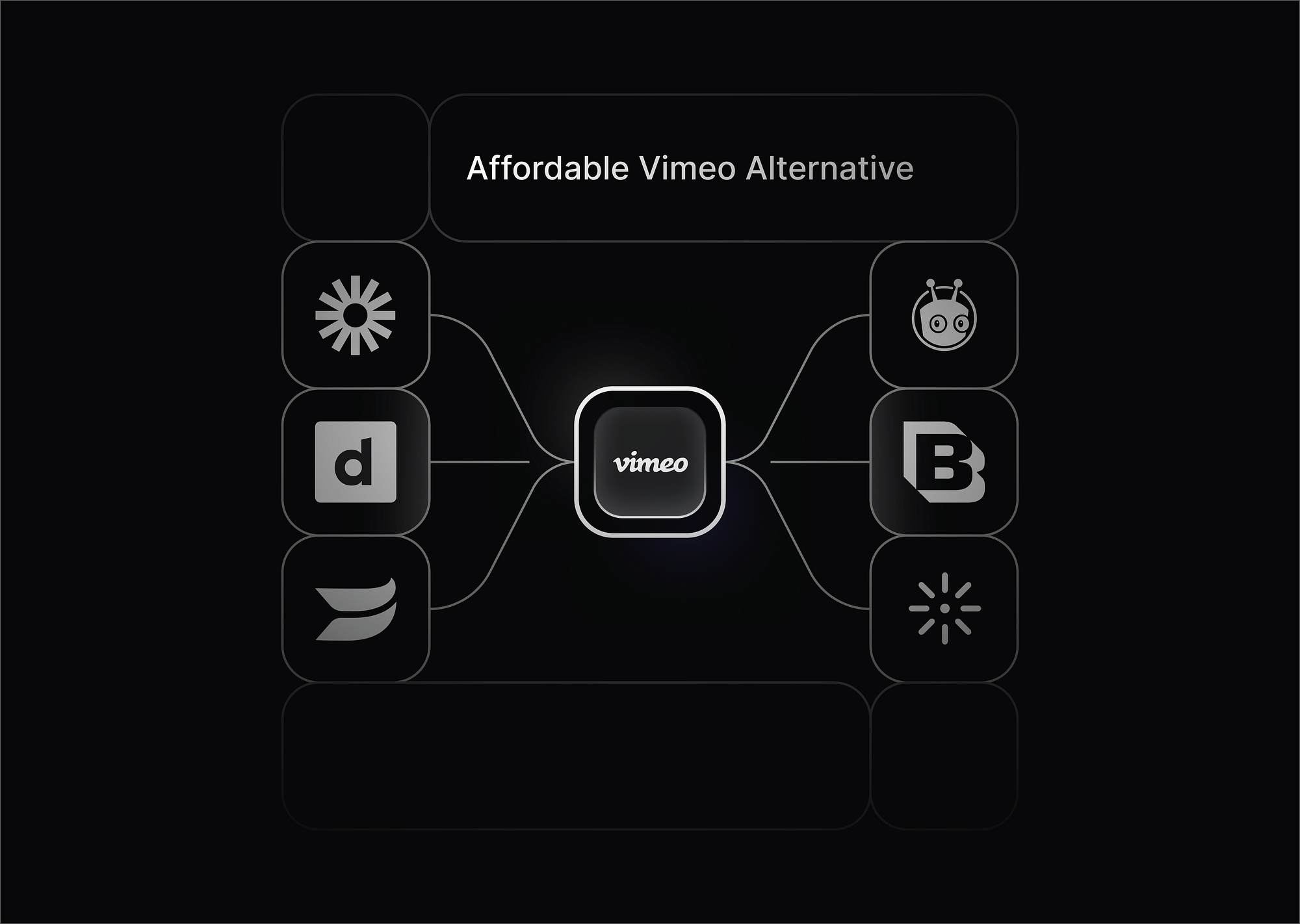What are the issues with Vimeo?
Vimeo has been one of the leading video-based platforms for many years now. However, the platform does come with issues. Some of these include:
- Abysmal Support Staff: Online communities specifically criticize Vimeo’s customer support. Vimeo pays the slightest attention to their customer success, with many of their customers facing video downtimes and not getting proper support from Vimeo for days.
- Server and Playback Issues: Other prominent problems like video playback issues and large server downtimes have disrupted the professional routines of many content providers and video creators on Vimeo. Even members using the premium version of the application are suffering from the same shortcomings.
- Limited Analytics: Vimeo is advertised as an all-in-one video platform. However, its analytics are severely limited, showcasing only the basic metrics. This tends to limit the insights that creators can gather from the data.
- High Transaction Costs: According to Vimeo’s policy, when you sell your video using Vimeo on Demand (VOD), the platform will charge a 10% fee, significantly impacting the profit margin of businesses and content creators.
Gumlet has solved all these problems and defined a video solution architecture that offers comprehensive analytics, highly dedicated support staff, and optimized streaming capabilities. Most importantly, Gumlet is economically feasible, and the video delivery process is also more streamlined and backed by a detailed media delivery infrastructure.
Let's dive into a detailed comparison between Gumlet and Vimeo and understand why Gumlet is better for streaming your videos.
Gumlet vs. Vimeo: A Detailed Comparison
Despite Vimeo’s considerable head start, Gumlet is catching up quickly by adding new features and benefits that users can enjoy. Here is a detailed head-to-head comparison to separate the two platforms:
| Basis of Comparison / Features | Gumlet | Vimeo |
|---|---|---|
| Video Library + advanced search | Yes, across plans | Enterprise only |
| AI-subtitle generator + AI translation | Yes | Yes |
| DRM video encryption | Yes, with Business plan | Yes, with Vimeo OTT |
| Dynamic watermarks, Signed URLs | Yes | No |
| Advanced analytics + APIs and webhooks | Yes, with Business plan | Enterprise only |
| Max seats in $10 starter plan | 2 seats | 1 seat |
| Streaming bandwidth/month | Unlimited streaming | 2 TB |
| 24x7 human support | Yes, across plans | Enterprise only |
| Glitchy videos | No | Frequent |
| Instant video start time | Yes | No |
| Player customizations & branding | Yes | Limited |
| 360-degree analytics | Yes | No |
| 24X7 Chat support | Yes | No |
| Fastly CDN (used by TikTok) | Yes | Yes |
| Netflix-grade compression with PTE | Yes | No |
| Dev friendly experience | Yes | No |
| Fail-proof video infrastructure | Yes | No |
| Buffering instances | No | Frequent |
| 3rd-Party analytics integration | Yes | Yes |
| Custom video pipelines | Yes | No |
| Video watermarks | Yes | Yes |
| APIs | Yes | No (Only for top-tier users) |
| Webhooks | Yes | No (Only for Vimeo OTT customers) |
| Signed URLs & access tokens | Yes | No |
| Geo-blocking | Yes | No (Only for Vimeo OTT customers) |
| Email support | Yes | Yes |
| 99.99% uptime SLA | Yes | No |
| Dedicated account manager for enterprise users | Yes | Yes |
| Transaction Costs | None | 10% for each sold video |
Let us now discuss the comparison comprehensively.
Video Streaming and Optimisation
Gumlet:
Gumlet provides features that make the video streaming experiences more consistent when compared to Vimeo. These features include support for technologies like Per-title encoding and Adaptive Bitrate Streaming, allowing users to seamlessly deliver the right quality and resolution to each and every viewer as per their device capabilities, processing power, and bandwidth. The platform also offers HLS & DASH support and minimizes video buffering with its per-title encoding feature.
Gumlet has demonstrated the potential for up to a 50% improvement in compression performance compared to Vimeo.
Vimeo:
Vimeo lags behind Gumlet in terms of video streaming. Buffering during the startup time of the video is one of the major drawbacks of Vimeo. Also, the compression performance, for example, is almost half as good as what you would get on Gumlet. Moreover, there are routine complaints about the high downtimes as well, with little to no customer support available to help users and creators through that.
Overall, Gumlet offers better video streaming capabilities than Vimeo. Gumlet's per-title encoding technology results in smaller file sizes, which means faster loading times and smoother playback. Gumlet also offers a wider variety of streaming options and more detailed analytics.
Pricing
| Feature | Vimeo - Starter (12$/m) | Gumlet - Creator (10$/m) |
|---|---|---|
| Streaming Bandwidth | 2GB/month | Unlimited |
| No. of seats | 1 | 2 |
| Storage | 100GB | 4000 mins (3-4x more cost effective) |
| Player Branding | No | Yes |
| Usage Analytics | No | Yes |
| Email Embed | Gmail only | All emails |
| Custom CTAs | No | Yes |
| Custom lead capture forms | No | Yes |
| Marketing Integrations | No | Yes |
| Geo-Blocking | No | Yes |
Gumlet:
Gumlet comes with a free plan for anyone willing to explore the product for free. It has 3 primary paid plans and an enterprise plan for enterprises looking for a custom plan as per their requirements.
Below is a table for Gumlet's pricing (As of May 2025):
| Creator | Professional | Business |
|---|---|---|
| $10/ Month | $24/ Month | $120 / Month |
| Best For: Personal Projects |
Best For: Small and mid-sized companies |
Best For: Large companies |
| Bandwidth: Unlimited Streaming |
Bandwidth: Unlimited Streaming |
Bandwidth: 2.5 TB bandwidth / month |
| Features: 4000 storage minutes, Video engagement tools, Video chapters and SEO, 4K & HDR10 streaming support Engagement & viewer metrics |
Features: Everything in Creator Plan + 10000 storage minutes Channel embed & membership Channel custom domain Video experience metrics |
Features: Everything in Professional + 15,000 storage minutes DRM support Technical support API, SDKs and webhooks |
Vimeo:
The Vimeo pricing model is based on three plans, their Starter plan cost $12/month and their next plan, the Standard plan costs $25/month, which is higher than the Gumlet's corresponding plans.
However, the platform’s Enterprise package, priced flexibly according to the client’s requirements, is often more expensive than Gumlet’s flexible plans.
Analytics
Gumlet:

Gumlet provides detailed analytics and covers many metrics to gather relevant insights about different videos published by the creators. Apart from offering deep engagement metrics, Gumlet is popular for focusing on another important aspect - latency metrics.
Latency measures the delay between the time when the client requested a video and the actual time when the video started playing. Optimizing the latency of your videos is the key to long-term audience retention. Using these significantly deeper metrics will allow creators to enhance their user engagement and views.
Vimeo:
Vimeo also offers basic analytics to its members, but the metrics used by the platform are very minimal compared to Gumlet. While they provide the basic data on the performance of the video, they do not have the tools to measure the technical performance of the video, unlike in the case of Gumlet, which offers both.
So, Vimeo analytics cannot provide a detailed framework of how the video is performing.
DRM (Video Protection)
Gumlet:
Gumlet offers the highest Return on Investment by minimizing the risk of piracy, illegal downloads, and unauthorized streaming. Users can enjoy Netflix-grade security and protect their videos on the internet against any kind of digital thievery.
Gumlet gives you a variety of choices for protecting your video playback. Gumlet supports two of the most popular and reliable DRM systems on the internet - Google’s Widevine and Apple’s Fairplay. Gumlet also offers dynamic watermarking and facilitates secure playbacks by enforcing geo-blocks and signed URLs.
By default, your video playback URLs are public, allowing them to be shared and viewed anywhere. If this is not what you want, you can use one or more of the Gumlet playback URL security options (such as Geo-location Blocking and signed URLs).
Vimeo:
Vimeo has recently introduced DRM capabilities with their Vimeo OTT, expanding their security features to meet growing customer needs.
Player Customizations
Gumlet:
Gumlet offers the following player customization options such as:
- Preload: The preload will load the video when the page is loaded (wherever the video is embedded). By default, Gumlet enables the preload setting to remove the load time for users when played.
- Autoplay: The autoplay, when enabled, will play the video when the page is loaded. By default, Gumlet disables this setting. Note: The audio will be muted across all browsers and devices.
- SEO metadata: When enabled, we will add an SEO markup to embed code for all the videos in that collection. By default, Gumlet enables this setting for you to get the best out of video SEO.
- Dynamic watermarking: Gumlet adds a moving watermark directly to your videos when enabled. You will see moving text with user IPs when you embed the videos. The dynamic watermark adds an additional level of security to your video.
- Disable seek bar: Enable this to disable the seeking on your videos. This setting is helpful for educational and training use case where the institute/organization don't want users to skip content.
- Disable Player Controls: Remove all the controls from your player and let your audience focus on the video content.
- Loop: When enabled, your video will play in auto-loop mode.
- VAST Tag: The VAST tag takes the URL as input. Our player will automatically play ads defined in this VAST tag during playback.
And many more.
Vimeo:
Vimeo's player customization options are limited compared to the extensive capabilities of Gumlet.
Integrations
Gumlet:
Gumlet offers high-end integrations and is compatible with most major platforms and tools in the video technology space. Some of the notable mentions are Mixpanel, Segment, and Amplitude.
- Gumlet provides API access to make communicating the same project over various applications more convenient.
- Gumlet comes with CDN integration with the help of platforms like AWS CloudFront, Cloudflare, and Fastly.
- Gumlet has many plugins to support Content Management Systems like WordPress and Shopify.
- Gumlet also supports using different Software Development Kits (SDKs) and libraries for different programming languages.
Vimeo:
Vimeo also offers some amount of integration benefits. For example, it provides an API set to enable custom integrations and provide third-party compatibility with tools like Google Analytics. However, it lags behind Gumlet regarding compatibility with modern tools, technologies, and applications.
Product User Experience
Gumlet:
Gumlet has a higher customer score regarding user experience and interface because of its simplicity and ease of navigating through different features and functionality. The design of the website, as well as the mobile support of the application, are seamless.
Vimeo:
Vimeo has always been criticized by its users for having a complicated interface. The navigation process is also very complex when using different features throughout the video publishing pipeline.
Customer Support
Gumlet:
Unlike Vimeo, Gumlet places a lot of emphasis on Customer Support. Apart from the 24/7 chat and email support available to all the clients, they also assign dedicated Customer Success Managers to all Enterprise Clients.
These measures' relatively low downtimes and minimal complications have resulted in high customer satisfaction rates.
Vimeo:
Vimeo’s customer satisfaction ratings have dropped in recent years. With a growing customer base, issues like extended downtimes have become even more prominent.
With a minimal focus on customer support, many loyal users of the platform are opting out of their plans and looking for the ideal Vimeo alternative.
Why is Gumlet the Best Choice for Streaming?
Gumlet is indisputably the better choice among the two. Vimeo has many prominent drawbacks, like latency and server downtime issues, inadequate customer support, and relatively high transaction costs.
- Customer service: Gumlet assigns a dedicated Customer Success Manager to all of its enterprise clients along with an assurance of 99.99% Uptime and SLA.
- Video Optimization: Gumlet offers at least 50% better compression than Vimeo without losing the quality of your video with its per-title encoding technology. This enables one to save a lot of costs related to cloud infrastructure.
- Buffer-free streaming: Users complaining about buffering and lags in startup times are familiar with Vimeo. But with Gumlet’s Adaptive Bitrate Streaming, one can deliver a smooth, buffer-free end-user streaming experience.
- End-to-end video platform: Gumlet is an end-to-end video platform, unlike Vimeo. You can store and manage your videos with an intuitive CMS, transcode and stream to millions of viewers, protect your video content against illegal piracy, & analyze your video streams with Gumlet Analytics. Gumlet has it all in one place with one single billing.
- Video security/DRM: Vimeo doesn't have any provisions of video security against piracy, copying, etc., while Gumlet, on the other hand, has multi DRM, tokenized access (expiring links), anti-password sharing measures, and geoblocking, to name a few to protect your videos.
- Multi-CDN support: Gumlet incorporates Multi-CDN support, effectively mitigating the risk of latency issues, delays, and buffering. In addition to this, Gumlet's Multi-Region Processing and Auto Region Failover support features enable video optimization even in the event of an entire region going offline—thus ensuring uninterrupted service and enhanced reliability.
- Developer friendliness: REST APIs, webhooks, & detailed documentation make Gumlet a super dev-friendly tool. One can build a custom video streaming infrastructure with a few lines of code and a few clicks with Gumlet.
Conclusion
Gumlet, which was founded a little over four years ago, has established itself as the best alternative to Vimeo and surpassed it in most aspects.
From high-end features, superior compression performance, advanced streaming features, robust failover capabilities, and flexible pricing options, Gumlet shows staggering promise and is fast emerging as an industry leader in the video hosting space.




